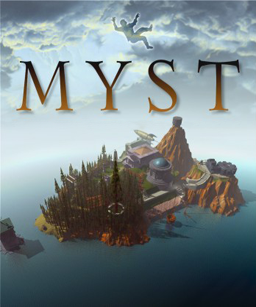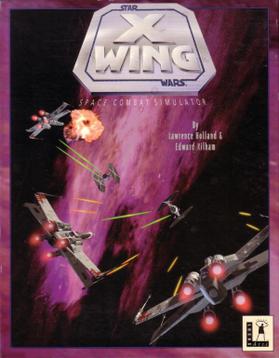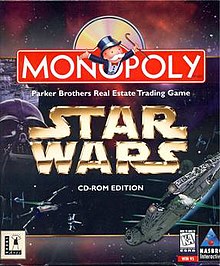
The Compact Disc-Interactive is a digital optical disc data storage format that was mostly developed and marketed by Dutch company Philips. It was created as an extension of CDDA and CD-ROM and specified in the Green Book specifications, co-developed by Philips and Sony, to combine audio, text and graphics. The two companies initially expected to impact the education/training, point of sale, and home entertainment industries, but CD-i eventually became best known for its video games.

Myst is an adventure video game designed by Rand and Robyn Miller. It was developed by Cyan, Inc., published by Broderbund, and first released in 1993 for the Macintosh. In the game, the player travels via a special book to a mysterious island called Myst. The player interacts with objects and traverses the environment by clicking on pre-rendered imagery. Solving puzzles allows the player to travel to other worlds ("Ages"), which reveal the backstory of the game's characters and help the player make the choice of whom to aid.

Night Trap is a 1992 interactive movie developed by Digital Pictures and published by Sega for the Sega CD. Presented primarily through full-motion video (FMV), Night Trap has the player observe teenage girls having a sleepover visiting a house which, unbeknownst to them, is infested with vampires. The player watches live surveillance footage and triggers traps to capture anyone endangering the girls. The player can switch between different cameras to keep watch over the girls and eavesdrop on conversations to follow the story and listen for clues.

Pyst is an adventure computer game released in October 1996. It was created as a parody of the highly successful adventure game Myst. Pyst was written by Peter Bergman, a co-founder of the Firesign Theatre, and was published by Parroty Interactive, with Bergman, Stallone, Inc. as co-publisher. Mindscape began distributing the game on August 20, 1997. The parody features full motion video of actor John Goodman as "King Mattruss", the ruler of "Pyst Island". Versions of the game were produced for both the Windows PC and Apple Macintosh operating systems.

Avalon Interactive Group, Ltd. was a British video game distributor based within Europe that formerly traded as the video game publishing and distributing division of British conglomerate the Virgin Group.

Star Wars: X-Wing is a space simulation video game, the first of the X-Wing combat flight simulation games series. The player's character flies starfighters, including the X-wing, for the Rebel Alliance. The narrative precedes and parallels the events of Star Wars Episode IV: A New Hope.

Nightmare Ned is a 1997 computer game for Microsoft Windows that was developed alongside the animated series of the same name. The game was based on a concept by Sue and Terry Shakespeare. It was released on October 7, 1997.

Living Books is a series of interactive read-along adventures aimed at children aged 3–9. Created by Mark Schlichting, the series was mostly developed by Living Books for CD-ROM and published by Broderbund for Mac OS and Microsoft Windows. Two decades after the original release, the series was re-released by Wanderful Interactive Storybook for iOS and Android.

Star Warped is a first-person point-and-click adventure video game that parodies the Star Wars universe, specifically the original trilogy released between 1977 and 1983: Star Wars, The Empire Strikes Back, and Return of the Jedi. It was created by Parroty Interactive, which was a division of the game's publisher, Palladium Interactive. Star Warped was released in the United States and Canada, for both Windows PC and Macintosh, in late 1997 as a follow-up to their debut Myst parody, Pyst. The game is no longer in release, as Parroty's parent company folded after being bought by The Learning Company in 1998. The game invited players to "Be seduced by the power of the Dork Side". Star Warped received mixed reviews from critics: some praised the game's variety, originality, and humor, while others dismissed it as lazy, unfunny, and dull.

There have been numerous Monopoly video games based on the core game mechanics of Parker Brothers and Hasbro's board game Monopoly. They have been developed by numerous teams and released on multiple platforms over 35+ years.

The board game Monopoly has its origin in the early 20th century. The earliest known version, known as The Landlord's Game, was designed by Elizabeth Magie and first patented in 1904, but existed as early as 1902. Magie, a follower of Henry George, originally intended The Landlord's Game to illustrate the economic consequences of Ricardo's Law of economic rent and the Georgist concepts of economic privilege and land value taxation. A series of board games was developed from 1906 through the 1930s that involved the buying and selling of land and the development of that land. By 1933, a board game already existed much like the modern version of Monopoly that has been sold by Parker Brothers and related companies through the rest of the 20th century, and into the 21st. Several people, mostly in the midwestern United States and near the East Coast of the United States, contributed to its design and evolution.

Worms is a 2D artillery tactical video game developed by Team17 and released in 1995. It is the first game in the Worms series of video games. It is a turn based game where a player controls a team of worms against other teams of worms that are controlled by a computer or human opponent. The aim is to use various weapons to kill the worms on the other teams and have the last surviving worm(s).

Star Wars: TIE Fighter is a 1994 Star Wars space flight simulator and space combat video game, a sequel in the Star Wars: X-Wing series. It places the player in the role of an Imperial starfighter pilot during events that occur between The Empire Strikes Back and Return of the Jedi.

The American Girls Premiere is an educational computer game developed and published by The Learning Company for American Girl. The game allows players to create theatrical productions featuring characters from American Girl's Historical collection, along with scenes and other elements unique to each of the girls' respective time periods.

Disney's Animated Storybook is a point-and-click adventure interactive storybook video game series based on Walt Disney feature animations and Pixar films that were released throughout the 1990s. They were published by Disney Interactive for personal computers for children ages four to eight years old. Starting from 1994, most of the entries in the series were developed by Media Station. They have the same plots as their respective films, though abridged due to the limited medium.
Madeline is a series of educational point-and-click adventure video games which were developed during the mid-1990s for Windows and Mac systems. The games are an extension of the Madeline series of children's books by Ludwig Bemelmans, which describe the adventures of a young French girl. The video-game series was produced concurrently with a TV series of the same name, with characters and voice actors from the show.

Monopoly is a 1995 video game based on the board game Monopoly. Developed by Westwood Studios, published by Hasbro Electronic Entertainment and distributed by Virgin Interactive Entertainment. This title was one of many inspired by the property. It was later reissued in 1998 with different box art.

Monopoly Here and Now is a video game adaption of the board game of the same name, which itself is a version of the classic board game Monopoly. It was originally developed by Glu Mobile for the mobile market in 2006. A PC version was created by Encore Software for the Windows XP/Vista in 2007. It was then released for the iOS as "Monopoly Here & Now: The World Edition". It was developed by EA Mobile and Hasbro. The game marked the franchise's debut into the iOS market, and was launched on Nov 20, 2008. The game was also scheduled for release on Nokia N-Gage. The game was added to the Pogo.com platform in 2009.

Virtual Murder, renamed as Murder Mystery is a four-part murder mystery adventure video game series developed by Creative Multimedia Corporation. The games were released in 1993 and 1994 for Macintosh and Windows PCs.
Leonardo da Vinci is a 1997 interactive CD-ROM game by Corbis, consisting of a "computerized viewing tool which permits the user to examine English translations of the Codex [Leicester] superimposed onto facsimiles of its pages". The tool, known as Codescope, is licensed by Corbis.



















